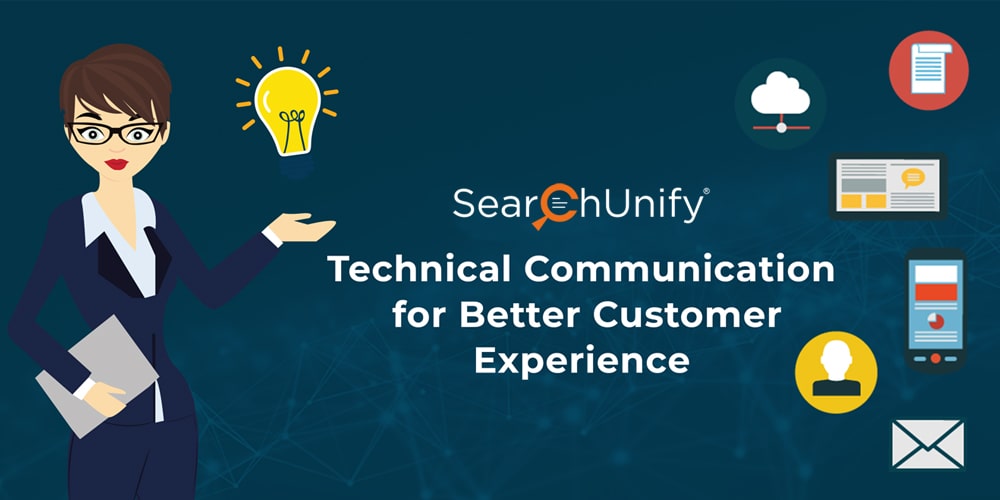
In the good ol’ days, all technical writers had to do was collaborate with SMEs (Subject Matter Experts), format paragraph headings, and convert technical jargon into comprehensible language for the layman.
Had you asked them about accessibility or user experience of their content, they might have laughed at you. They would have considered themselves lucky even if a handful of people actually went through any of the documents they ever created.
But that is ancient history! Now, everything they write or edit is available on the world wide web for anyone to see and scrutinize. Thanks to the internet’s transparency & growing concern over reshaping customer experiences, tech writers had no option but to evolve with the changing times.
The massive proliferation of internet has paved the way for cloud data, cloud computing, and social media, thereby leading enterprises on the digital path. The customers habits have also evolved by leaps and bounds. They now prefer DIYs, infographics, and other forms of interactive content instead of going through endless blocks of text.
In this blog, I will attempt to answer one question: how technical writing is evolving with digitalization of enterprises. Without further ado, here we go!
Customer Experience: The Latest Battlefield of Business
There is no denying the fact that interest in customer experience is at an all-time high. It is no longer just a buzzword and has been proven to make a difference in a market consisting of similar products or services. Here are some stats which back my claim:
- According to Deloitte, 62% of companies look at customer experience as a competitive differentiator.
- According to Gartner, over 50% of organizations will pump up investment in customer experience innovations.
Contrary to popular belief, CX is not just limited to the design of product user interface (UI) but encompasses all the touchpoints of a customer’s journey with an organization. This makes CX all the more important for casting a positive brand image and building advocacy.
To advance on customer experience, organizations cannot bank on arbitrary criteria. Instead, they should develop and adopt data-driven strategies for a more comprehensive understanding of their customers.
Creating personas and mapping journeys not only provides useful insight about customers but also helps detect friction points that alleviate satisfaction and offer a personalized experience. But which strategies can enterprises adopt to step up their CX game? Let’s get started!
Nailing Customer Experience Strategies
Companies describing themselves as ‘customer-centric’ embrace customers’ needs by bringing them into the product design process. Ideally, companies should identify both overlapping and delineating points between customers’ goals and business goals.
Knowing your customers well enough in turn means greater ability to personalize interactions, and thus increase the convenience of the ‘self-service’ consumer. The self-service economy marginalizes friction points and assists speedy resolution of questions and issues.
A McKinsey study revealed that customers who take a digital-only customer service journey report 19% higher satisfaction levels than customers who choose a traditional customer support route.
As customers are becoming increasingly tech savvy, they prefer to help themselves with on-demand content (knowledge bases or content portals), rather than resort to traditional channels (call centers or retail stores), which they see as time-consuming and frustrating.
Customers are getting used to immediate gratification, and getting a quick answer is indeed one of the new customer demands that companies have to cater to. A Forrester report found that:
- 73% say that valuing their time is the most important thing a company can do to provide them with good online customer service.
- 53% of adults in the US are likely to abandon their online purchase if they cannot find a quick answer to their question.
The digital age has facilitated information gathering for customers and, as a result, customers are more informed than ever. Empowering customers with self-service tools (such as online communities and forums, help centers, support portals, etc.) gives them more control over the buying process, and hence a more complete customer experience.
CX & Technical Documentation
Customer service is a key component of the customer experience and can influence a customer’s perception of a company either positively or negatively. That is where documentation comes in: it has always been at the core of customer service.
While some may argue that documentation is only meant to drive down the costs of support, this ceased to be true when documentation started to be published online, instead of being shipped as books or CD sets.
Nowadays, documentation is often made available online for customers to access it freely, at any point in their journey with the company. This means that product and service information can not only be reached during the post-sales phase for support purposes, but also and most importantly, during the pre-sales phase to assist customers in their purchase decision process.
For IT buyers, high-quality technical content is either important or very important to the initial purchase decision. The self-service economy impacts every phase of the customer journey. Yet not all companies seem to be actively transitioning from internally-focused to customer-focused.
According to a survey led by DCL and CIDM, 30% of surveyed technical communication professionals said their content was not ready for digital business. Among those, 65% and 64% said they could not do anything about it due to lack of budget and staffing respectively.
Still, the companies seem hesitant to leverage this opportunity to make more profit and alleviate customer support costs, while enhancing customer experience. Our question now is to know how documentation could evolve to better serve customers and keep up with trends in customer experience.
Catering to Customers’ Information Needs
As I mentioned earlier, customers now expect you to be informative and fun. For the technical communicators, this means that they need to adapt and offer more innovative solutions to cope with this demand.
As a result, new content formats have emerged, such as video tutorials and animated GIFs, allowing them to reproduce steps in a complex workflow more easily. In fact, a survey led by The Content Wrangler demonstrated that 44% of respondents use video to create training materials and learning aids.
Now that we know which forms of content work better, let us talk about understanding the content needs of the audience. Since the inception of technical documentation, analyzing end-users’ need has been a constant challenge for technical writers and they often have little to no idea about the kind of content people are actually looking for. Consequently, they end up creating content which fails to convert the audience.
[ALSO READ: AI & Search Analytics: The Yin & Yang of High-Performing Content Pieces]
Furthermore, organizations now use an array of platforms to create & store relevant information. This means content gets distributed across multiple platforms which leads to accessibility issues as finding the right information becomes quite a daunting task.
Conquer the CX Turf with An Insight Engine
It goes without saying that technical communicators have a lot on their plate and not much to ease the load. This is where an insight engine steps in. It not only adheres to all the above-mentioned issues but also offers a little more.
According to Gartner, insight engines provide “more-natural access to information for knowledge workers and other constituents in ways that enterprise search has not.” What makes it so special is the fact that it has the ability to cope with your structured and unstructured data residing in disparate knowledge sources without breaking a sweat.
Then, it leverages AI to provide rich insights on content accessibility and usage based on user behavior and conversions. It relies on natural language processing (NLP) to understand a user’s query and then taps into machine learning to deliver relevant results to your customers and employees.
[ALSO READ: Banking on Artificial Intelligence to Deliver Results]
It also keeps a tab on all the user journeys to evaluate content performance and identify pieces unable to convert the target audience. This facilitates you to redirect efforts towards more result-oriented outcomes. It also enables the intelligent engine to identify gaps in content so as you can fill them at the earliest.
In this era of instant gratification, a powerful insight engine also helps foster self-service by enabling patrons to find helpful content from your entire knowledge base in a jiffy. This, in turn, has a positive impact on CSAT while helping reduce support expenditure. As a bonus, you also end up delivering a positive user experience.
Conclusion
Here are a few bits you could take away from your reading today:
- Customers now demand more interactive forms of technical content.
- Developing & delivering technical content that caters to users’ needs helps improve CX.
- Digital technical content plays a crucial role in buying decisions
- It is challenging to create content that will convert as technical writers don’t get a lot of insights
- Insight engine create a unified knowledge base and provide real-time insights on content usage and performance
Let’s face it, content management at the enterprise level is a must. It reduces the time and effort needed to develop and manage organizational content for all interested users, and the outcome is rather rewarding.
So it will not be wrong to say that technical communicators no longer just deal with product documentation but have become a key contributor to customer experience. The consuming habits have changed and customers expect you to cater to their new demands. This makes it important for organizations to take every step they can to ensure user empowerment.
An insight engine not only ensures automated management but also provides real-time analytics to aid constant monitoring and improvement. This way, the smart engine can play a monumental role in the long-term success and growth of your organization.
[ALSO READ: Time to Clean Your Content Using Search Analytics]
To sum it up, ride the AI wave, enhance customer experience, and stay several paces ahead of the competition. These are just some of the benefits which a powerful insight engine offers. What else can you possibly ask for!
Want to experience the power of the intelligent engine? Then sign up for a live demo now!



















